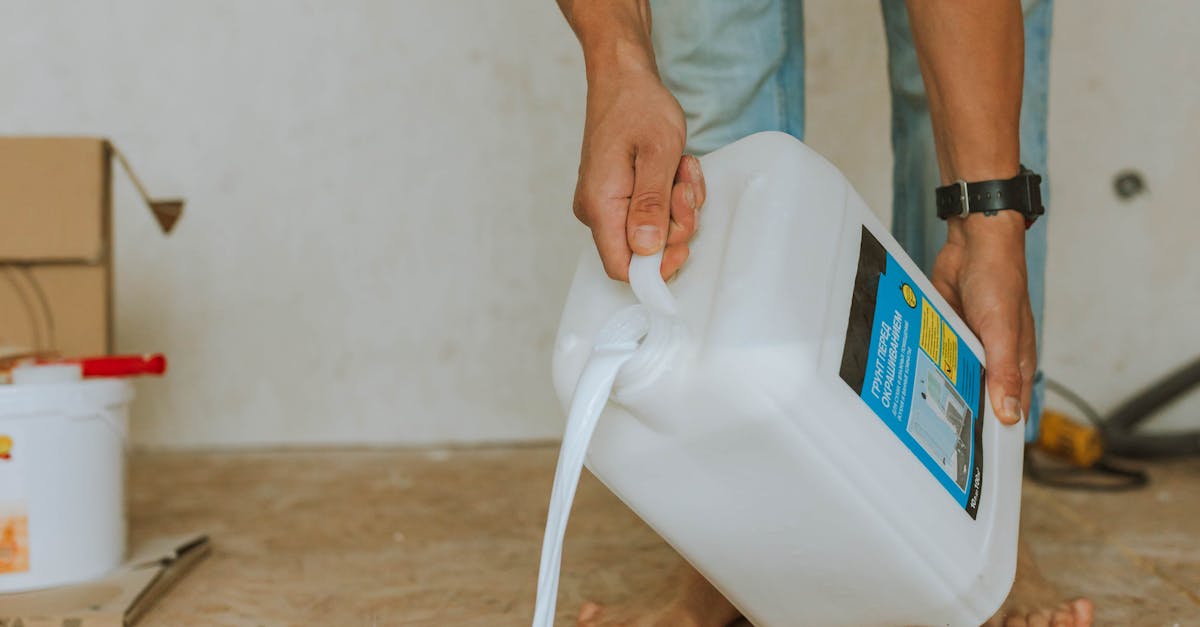
Installing Underlayment
Properly installing underlayment is a crucial step in the hardwood floor installation process. This layer serves multiple purposes, including providing a moisture barrier, reducing noise, and offering slight cushioning for the floor. Make sure to choose an underlayment that is compatible with your specific type of hardwood and follows the manufacturer's recommendations. Lay the underlayment sheets or rolls across the entire area where the hardwood will be installed, ensuring they cover the subfloor evenly.
To secure the underlayment in place, use tape to join the edges of the sheets and prevent movement during the installation. Trim any excess material at the walls or around obstacles such as pipes and vents. Ensuring the underlayment is smooth and free of wrinkles will help create an optimal base for your hardwood floor installation. An even surface is essential as it can affect the fit and finish of the hardwood planks, ensuring longevity and ease of use.
Benefits of Using Underlayment
Using underlayment during hardwood floor installation has several advantages that enhance the overall quality and longevity of the flooring. It provides an additional layer of cushioning beneath the hardwood, helping to absorb sound and reduce noise levels within the space. This is particularly beneficial in multi-level homes or apartments, where sound can travel more easily through floors. The underlayment also helps to smooth out minor imperfections in the subfloor, creating a more even surface for the hardwood to be installed on.
Moreover, underlayment serves as a moisture barrier, protecting the hardwood from moisture-related issues that could lead to warping or damage. This is crucial in areas where moisture levels are a concern, such as basements or near water sources. By investing in quality underlayment, homeowners can contribute to the durability of their hardwood flooring, ultimately extending its lifespan and maintaining its aesthetic appeal over time.
Starting the Installation Process
Before beginning the hardwood floor installation, ensure that the room is clean and free of any debris. Remove any baseboards or trim to create a seamless transition between the floor and the walls. Measure the space to determine how much material you will need, taking care to account for any irregularities in the walls. It is also advisable to allow the hardwood planks to acclimate to the room’s temperature and humidity for at least 48 hours prior to installation. This process helps prevent warping or buckling after the floors are laid down.
When you're ready to start, choose a starting wall to lay your first row of planks. It's important to work from the straightest wall in the room to ensure a clean and level installation. Lay the first planks along this wall, maintaining a gap for expansion. Use spacers to ensure the correct distance from the wall, which accommodates changes in temperature and humidity. Consider the direction of light in the room; laying the boards with the grain running parallel to the incoming light can enhance the aesthetic appeal of the hardwood floor installation.
Setting the First Row
Establishing the first row is a critical step in the hardwood floor installation process. Begin by carefully measuring the width of the room. This ensures that the first row will be straight and aligned with the walls. Lay down a spacer to maintain an expansion gap between the boards and the wall. The spacers are essential as they allow for wood expansion and contraction with changes in humidity and temperature. Use a chalk line to create a reference point that guides the placement of your initial boards.
When placing the first row, ensure that the boards are positioned with the tongue side facing the wall for optimum fitting with subsequent rows. Use a level to verify that the boards sit flat. If you encounter any imperfections in your floor, it may be necessary to sand or level those areas before proceeding. Secure the first row with nails or a flooring stapler, following the manufacturer's guidelines. This foundation will set the tone for the rest of your hardwood floor installation.
Continuing the Installation
Once the first row of boards is securely in place, the next step in your hardwood floor installation involves adding subsequent rows. Make sure to stagger the seams between each row. This enhances the overall stability of the floor and adds a more aesthetically pleasing appearance. Pay attention to the layout of the boards so that they fit together seamlessly. Use a tapping block to gently tighten joints, ensuring a snug fit without damaging the edges of the wood.
As you progress, maintain a consistent expansion gap along the walls. This gap allows for the natural expansion and contraction of the wood due to changes in humidity and temperature. Use spacers to maintain this gap, making adjustments as necessary while continuing with your hardwood floor installation. Measure and cut boards at the end of each row to fit in place. Regularly check for level and alignment to keep your floor looking great.
Techniques for Joining Boards
When undertaking hardwood floor installation, selecting the right technique for joining boards is crucial for a seamless finish. Two primary methods are tongue-and-groove and click-lock systems. The tongue-and-groove technique allows planks to fit snugly together using interlocking edges, creating a secure bond that helps prevent movement and gaps over time. This method is especially effective for floating floors and can be utilized with various types of underlayment to enhance stability.
The click-lock system offers a more straightforward approach, where each board clicks into place without the need for nails or glue. This user-friendly method makes hardwood floor installation faster, as it often requires fewer tools and minimal effort to fit the pieces together. Both techniques have their advantages, and the choice largely depends on the specific flooring product used and the desired installation style. Proper alignment is key to both methods to ensure durability and aesthetic appeal in the finished floor.
FAQS
What tools do I need to install hardwood floors?
To install hardwood floors, you'll need a tape measure, chalk line, saw (circular or miter), hammer, flooring nailer or stapler, pry bar, and a rubber mallet, along with safety gear such as goggles and ear protection.
Can I install hardwood flooring over existing floors?
Yes, you can install hardwood flooring over some existing floors, but it's essential to assess the condition and type of the current flooring. Make sure it’s level and secure. In some cases, you may need to remove the old flooring.
How long does it take to install hardwood floors?
The time it takes to install hardwood floors can vary based on the room size and your experience level. Generally, it may take anywhere from a few hours to a couple of days for a typical room.
Do I need to acclimate hardwood flooring before installation?
Yes, it's recommended to acclimate hardwood flooring by letting it sit in the installation area for at least 48-72 hours. This helps the wood adjust to the humidity and temperature of the environment, reducing the risk of expansion or contraction after installation.
What should I do if my hardwood floors start to squeak?
If your hardwood floors start to squeak, it may be due to loose boards or inadequate underlayment. You can try tightening fasteners, adding more nails or staples, or applying a lubricant like powdered graphite in the gaps to reduce the noise.
